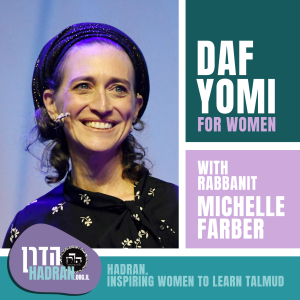
Today's Daf is sponsored by Orah F. Zipper in memory of her late husband, Stuart, Simcha haKohen ben Avraham. And by Ellen Golub and Steve Sass in memory of Ellen's father, Leo Golub - אריה לייב בן אליהו ומאסי on his seventh yahrzeit ."He was a native Yiddish speaker who loved the Jewish people and, despite a streak of atheism, insisted that his only daughter have an excellent Jewish education. He devoted his life to building a curious, creative, and loving Jewish family and is remembered joyfully by seven grandchildren and eight great-grandchildren. Yehi zichrono livracha."
What is the havdala blessing made up of? How many phrases of “separation”? What is the range of possibilities? Does one need to repeat ideas that are found in the words of the final part of the blessing at the beginning of the blessing or before the final blessing? The language in the phrases of “separations” in the havdala blessing should come from verses in the Torah where the word “lehavdil”, to separate, is used. The gemara suggests various possible endings for the blessing – "who organized the creations" "who created the world" “who sanctifies the Jewish people” “one who separates between the sacred and the profane” and also one that combines two of them. When Ulla came to Pumbedita, Rav Yehuda wanted to see what Ulla said during havdala so he sent his son with a basket of fruits to "spy". However, his son didn’t want to go and sent Abaye instead. Ulla only said simply the blessing “one who separates between the sacred and the profane." The gemara questioned why he did not have a longer version as per the stipulations for blessings as stipulated in a braita.
More Episodes
 2024-07-05
2024-07-05
 2024-07-04
2024-07-04
 2024-07-03
2024-07-03
 2024-07-02
2024-07-02
 2024-07-01
2024-07-01
 2024-06-30
2024-06-30
 2024-06-28
2024-06-28
 2024-06-28
2024-06-28
 2024-06-27
2024-06-27
 2024-06-26
2024-06-26
 2024-06-25
2024-06-25
 2024-06-24
2024-06-24
 2024-06-23
2024-06-23
 2024-06-21
2024-06-21
 2024-06-21
2024-06-21
 2024-06-20
2024-06-20
 2024-06-19
2024-06-19
 2024-06-18
2024-06-18
 2024-06-17
2024-06-17
Create your
podcast in
minutes
- Full-featured podcast site
- Unlimited storage and bandwidth
- Comprehensive podcast stats
- Distribute to Apple Podcasts, Spotify, and more
- Make money with your podcast
It is Free
- Privacy Policy
- Cookie Policy
- Terms of Use
- Consent Preferences
- Copyright © 2015-2024 Podbean.com





